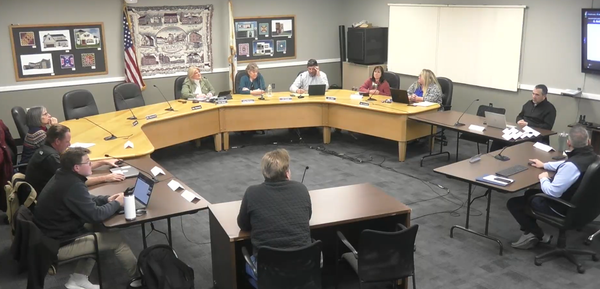Birds, Nets, and Rainforest Nights: An Expedition on Panama’s Pipeline Road
Columnist Bill Boivin describes an expedition deep in Panama’s rainforest, where he and wife Jane helped study tropical birds, embracing wild nature firsthand.
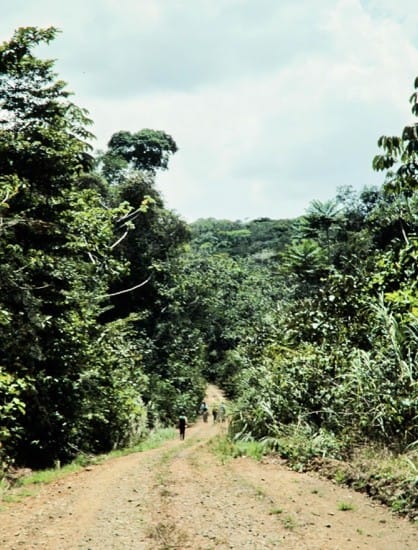
My wife, Jane, and I have always loved birds and nature, and we always dreamt of someday visiting a tropical rainforest. Around 1980 we became members of the nonprofit Earthwatch, which provided us with an annual catalog of scientific expeditions covering a wide variety of disciplines. Just reading the detailed descriptions, we were excited to one day join one. When we decided to take the plunge, we selected an expedition called Tropical Birds of Panama.
A pipeline and a service road (“Pipeline Road”) were built in Panama during WWII as an alternate way to move oil across the isthmus country if the Canal were to be shut down. It was never used for that purpose, but the crude dirt service road still existed in 1986 when we arrived for our expedition.
Pipeline Road is one of the prime birdwatching sites on the face of the Earth. Why? First, being a tropical rain forest, it has a highly diverse population of endemic species. But second, if you are a bird migrating between North America and South America, there are only two paths: over the vast open water of the Gulf of Mexico or overland through Central America. Due to the geography, all birds taking the overland route funnel through the narrow isthmus of Panama. Thus, a large number of native and migratory species can be found in Panama, and Pipeline Road takes you right into the heart of birdwatching paradise.
Our leader for this trip, Dr. James Karr, was the Acting Director of the Smithsonian Tropical Research Institute. He had done this expedition, focused on cataloging birds endemic to and traveling through the area, twice a year for the previous 7 years and had worked out any obstacles we might encounter.
Jim picked us up at the airport and drove us to a staging area in Gamboa where others had already gathered. There were 11 Earthwatch volunteers from around the US and Canada, 3 graduate students, and Jim. We loaded up vehicles and headed about 4 miles deep into the forest to “Limbo Camp.” Limbo Camp was an abandoned open-air hunt club that had at one time consisted of a screened sleeping area, bathroom and shower facilities, and a kitchen. However, vandals had stolen the screening, the plumbing, and the roof.
Jim had replaced the roof, but there were no walls. Our accommodations consisted of a roof on posts, a camping stove, and a small water hole for bathing. We each brought our own tents and sleeping bags.
When we arrived, the graduate students were tasked with digging a latrine a short way into the forest, which consisted of a hole in the ground with a log across it for a “seat” and a branch for holding the toilet paper.
And that was it – our luxury lodging for 14 days.
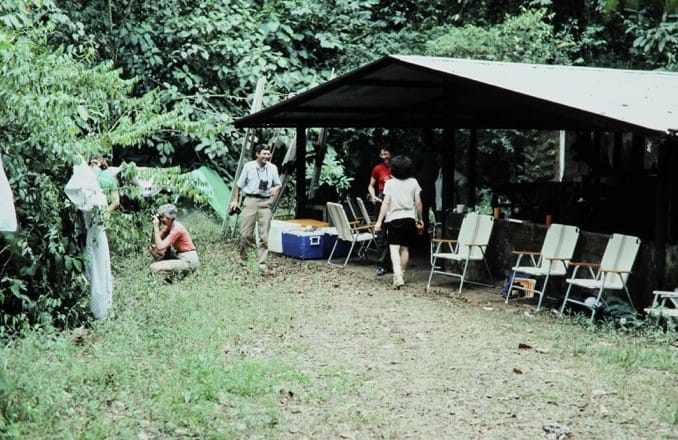
The first thing Jim did on our arrival at the camp was a basic safety and hygiene lecture.
Rule Number One: DO NOT wander off into the forest.
Jim advised us of bathroom and bathing etiquette and schedules and kitchen responsibilities and let us know we would rotate so everyone got one complete day off.
He told us what plants to avoid touching. He said there were venomous snakes in the area, but none whose bite would result in death in less than 24 hours; Jim could get us to a hospital in four. In case of a bite, he said, the greatest hazard was panic. Rather than running through the forest, he advised us to calmly WALK back to camp (and try to remember what the snake looked like). Thankfully, that advice was not put to use during our expedition!
And, finally, no one was to use the machetes except Jim and a trained assistant. “The most dangerous animal in this forest,” he said, “is a man with a machete.”
With those comforting directions, our adventure was underway!
The first night in the tent was sensory overload and frightening. We did not sleep a wink. There was constant hooting, screeching, barking, chirping, growling, and things walking around outside the tent. At one point Jane and I heard something scratching on the outside fabric of our tent. I grabbed a flashlight and investigated. It was the largest beetle I had ever seen!
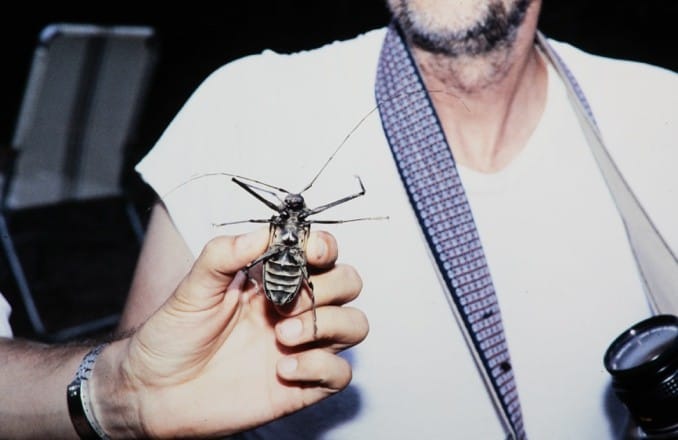
After that first night and reassuring lectures from Jim, we slept like babies. Each morning, we did have to shake out our boots before putting them on to remove any scorpions; likewise, we checked our sleeping bags at night before retiring.
Our basic task each day was to set up mist nets along a one-mile trail and a second slightly longer trail. Each trail was circular, starting and ending back at camp. Mist nets are very fine nets that birds cannot see and thus fly into them and get tangled.
This was a scientific study, and accuracy was of utmost importance. Each net had to be a specific distance off the ground and unfolded to a specific square footage. They covered an area from 1-6 feet off the ground. (Since it was impossible to string nets up in the canopy and monitor them frequently, this study was limited to birds in the understory.) There were about 6 nets along each trail. All nets had to be set up after dawn and taken down before sunset, so nothing could get caught in the net for the entire overnight period. (Bats were the most likely catch at night.)
There were three basic rules: No bird will be caught in a net for more than an hour; No bird is to be hurt while disentangling it from the net; No net is to be damaged unless to save a bird – in that priority order. That meant that each net on both trails had to be visited every hour all day long. The often difficult and tedious task of disentangling a bird had to be done very carefully. It took about 45 minutes to do a one-mile trail pass, more if there were a larger number of birds caught. That allowed for a 15-minute break before the next pass. From dawn to dusk! Most lunches consisted of a sandwich, grabbed on the go. While not every person had to go on every trail walk, Jane and I were so excited to see what was in the nets that we went on most.
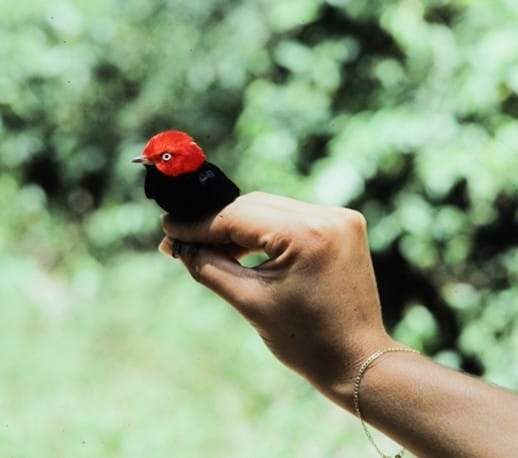
Each bird was identified, and, when possible, categorized as male, female, or FOI (“female or immature”) depending on markings. Its general health was assessed. If a female, we would blow on the belly to expose and document any brood patch (where the female plucked her feathers to have direct skin contact with eggs). Then it would be banded (only by Jim or trained students). Any existing bands were documented. Every piece of data was meticulously recorded for later analysis.
Dinner was usually chicken, rice, veggies, and some fruit. An occasional dessert treat was brought in from town. There was always cold beer. (I told you Jim had all the details worked out!). Chickens purchased in town came with the head and legs still attached. Before bed we would put those remaining pieces out at the edge of camp to see if we could attract panthers. We never saw or heard one, but the offerings would always be gone the next day.
Every night after dinner, there would be an hour or two before we crashed for the night. We would all sit in a circle and Jim would say, “what do we want to talk about tonight?” Someone might say “sloths” or “ants” and we were treated to an extremely detailed and lively discussion on the topic.
We loved those moments; they were definitely a highlight of the trip. If, during those discussions, any of us used the word “jungle," Jim would immediately correct them by saying, “No, this is the tropical rain forest. The jungle is over there,” pointing in the direction of the city.
We had two visitors during our stay. One, a photographer from Smithsonian Magazine, came for one day to document the project. The other was Scott Robinson, an ornithologist with the Illinois Natural History Survey, who stayed for 3 days. Scott had remarkable skills and could identify any bird by sound. His research involved walking off into the forest with a chair, binoculars, and a notebook, sitting alone for 3 or 4 hours at a time. He would note what birds he heard, how many of each were in that flock and their distance and direction, all by ear! He was a very useful birdwatching partner, helping us to identify canopy birds that we were not catching in the nets.
In his welcome lecture, Jim told us not to go off into the woods because we would definitely get lost. But another reason we were asked not to wander was the political unrest of the time. Under Manuel Noriega, Panama had become one of the first countries controlled by Columbian drug cartels. One report of Panama in 1986 said “the public outcry gave birth to the Cruzada Civilista (Civilian Crusade) which paralyzed the country…Noriega lost all capability to govern and turned aggressively violent against the Panamanian people”. (The US invaded Panama in 1989 to overthrow Noriega.) At Limbo Camp we occasionally heard gun and artillery fire off in the distance. When we left camp, we stayed one night in a hotel in Panama City. We were sequestered in the hotel and told not to leave under any circumstances. Despite the intense security, we had a lovely parting dinner and were successfully shuttled to the airport the next day.
A month after the expedition ended, Jim supplied us with a data report. We had captured 384 birds of 63 different species. 43% of captured birds had been previously banded. One bird was at least 10 years old and had been captured for the 11th time. The two most commonly captured birds were the bicolored antbird (42 captures) and the red-capped manakin (35 captures). These and other data (such as rate of capture per 100 hours of net operation) combined with over 30 subsequent years of data provide insight into seasonal and long-term population dynamics and can be used to analyze the effects of climate change on The Tropical Birds of Panama.
This was truly our first great adventure and led us to go on two future Earthwatch expeditions. Not all Earthwatch expeditions require strenuous activity; some can be as easy as sitting on a boat documenting dolphin or whale activity, but the opportunity to actually contribute to studying and protecting wildlife in their natural habitat under the direction of knowledgeable, experienced leaders is something I recommend to everyone. It's one thing to take a vacation but quite another to help save the planet while doing so!
Bill Boivin is a scientist, retired from 30 years of active duty with the United States Public Health Service. He is a Burlington Town Meeting Member and Conservation Commissioner. He and his wife, Jane, grew up in Lynn and now live in Burlington with their 2 mini dachshunds, 7 chickens, and Maya, a ball python. Bill and Jane have shared a love of nature, gardening, and wildlife for over 50 years. They have fostered, healed, raised, and loved a remarkable variety of animals in their time together. Learn more about Bill.



